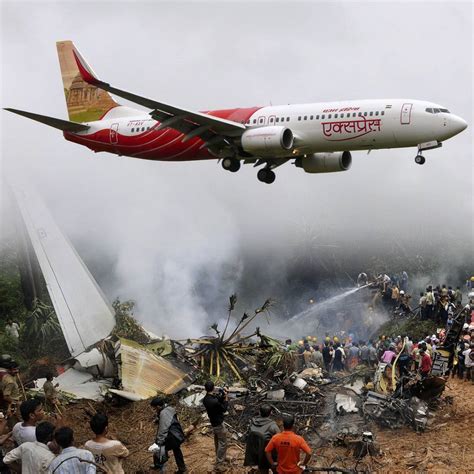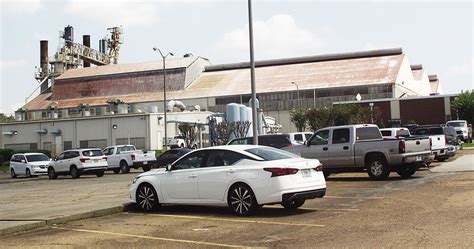
A harrowing Air India aircraft incident at Ahmedabad’s Sardar Vallabhbhai Patel International Airport was caught on security cameras, revealing the moment a jet suffered a tire burst upon landing. The footage shows sparks and debris erupting as the plane touched down, causing immediate concern among aviation authorities and passengers.
The incident, which occurred on Sunday, involved Air India flight AI617, arriving from Mumbai. The CCTV footage, now circulating widely, has prompted investigations into the cause of the tire failure and is raising questions about aircraft maintenance protocols. According to Air India officials, all passengers and crew members are safe, and there were no injuries reported. The aircraft, an Airbus A321, has been grounded for thorough inspection and repairs. The Directorate General of Civil Aviation (DGCA) has initiated a formal inquiry to determine the root cause of the incident and to assess whether any safety regulations were breached. The footage provides crucial visual evidence that will aid investigators in understanding the sequence of events leading to the tire burst. This incident underscores the critical importance of regular maintenance checks and adherence to safety standards in aviation.
Details of the Incident
Air India flight AI617, carrying approximately 150 passengers and crew, experienced the tire burst while landing at Ahmedabad airport around 11:15 AM local time on Sunday. The security camera footage clearly captures the moment of impact, showing the aircraft touching down normally before one of its tires suddenly exploded. Sparks flew from the landing gear, and pieces of rubber and other debris scattered across the runway. The pilot managed to maintain control of the aircraft, bringing it to a safe stop on the runway.
“The pilot executed commendable skill in controlling the aircraft after the tire burst, preventing any further damage or potential loss of life,” stated an Air India spokesperson.
Following the incident, emergency services were immediately deployed to the scene. Fire trucks and ambulances rushed to the aircraft, but thankfully, their services were not required as all passengers and crew had already deplaned safely. The passengers were evacuated via emergency exits and transported to the terminal building.
The runway was temporarily closed, causing delays for several other flights scheduled to land or depart from Ahmedabad airport. Airport authorities worked quickly to clear the debris and assess the extent of the damage to the runway surface. The affected aircraft was towed to a maintenance bay for a detailed inspection.
Investigation and Response
The DGCA has launched a comprehensive investigation into the incident. A team of investigators has been dispatched to Ahmedabad to collect evidence, interview crew members, and analyze the aircraft’s maintenance records. The investigation will focus on several key areas, including:
- Tire Condition: Examining the condition of the burst tire and other tires on the aircraft to determine if there were any pre-existing defects or signs of wear and tear.
- Maintenance Records: Reviewing the aircraft’s maintenance history to ensure that all scheduled maintenance checks were performed correctly and on time.
- Pilot Training: Assessing the pilot’s training and experience to determine if they followed proper procedures during the landing.
- Environmental Factors: Considering any environmental factors that may have contributed to the incident, such as runway conditions or weather.
“We are committed to conducting a thorough and impartial investigation to determine the cause of this incident and to prevent similar occurrences in the future,” said a senior DGCA official.
Air India has also initiated its own internal investigation. The airline is cooperating fully with the DGCA and providing all necessary information and assistance. The airline has emphasized its commitment to safety and has assured passengers that it is taking all necessary steps to ensure the safety of its flights.
Impact on Passengers and Air Travel
The incident caused significant disruption to air travel at Ahmedabad airport. Several flights were delayed or diverted to other airports. Passengers were stranded at the airport for several hours while waiting for updates on their flights.
Air India provided accommodations and meals to affected passengers. The airline also offered refunds or rebooking options to those who wished to cancel their travel plans.
“We sincerely apologize to our passengers for the inconvenience caused by this incident. The safety of our passengers and crew is our top priority, and we are doing everything we can to minimize the disruption to their travel plans,” said the Air India spokesperson.
The incident serves as a reminder of the potential risks associated with air travel. While aviation is generally considered a very safe mode of transportation, incidents such as this highlight the importance of vigilance and adherence to safety regulations.
Expert Opinions and Analysis
Aviation experts have weighed in on the incident, emphasizing the importance of regular maintenance and inspections. According to retired pilot Captain Ravi Sharma, “Tire bursts can occur due to various reasons, including manufacturing defects, improper inflation, or damage from foreign objects on the runway. However, proper maintenance and pre-flight checks can significantly reduce the risk of such incidents.”
Another aviation safety expert, Dr. Meera Patel, noted, “The swift response of the pilot and the emergency services was crucial in preventing any injuries or further damage. This incident underscores the importance of well-trained personnel and robust emergency response protocols.”
The incident also raises questions about the aging aircraft fleet operated by some airlines. While Air India has been modernizing its fleet in recent years, some of its aircraft are relatively old. Experts suggest that older aircraft may be more prone to mechanical failures, including tire bursts.
Broader Implications for Aviation Safety
The Ahmedabad incident has broader implications for aviation safety worldwide. It serves as a reminder that even seemingly minor incidents can have serious consequences. Airlines and aviation authorities must remain vigilant and proactive in addressing potential safety risks.
Key areas that require attention include:
- Enhanced Maintenance Programs: Implementing more rigorous maintenance programs, including more frequent inspections and testing of critical components.
- Advanced Tire Technology: Investing in advanced tire technology, such as tires with improved durability and puncture resistance.
- Runway Safety: Improving runway safety by removing foreign objects and ensuring proper maintenance of the runway surface.
- Pilot Training: Providing pilots with comprehensive training on how to handle emergency situations, including tire bursts.
- Safety Culture: Fostering a strong safety culture within airlines and aviation authorities, where safety is prioritized above all else.
Air India’s Response and Future Plans
Air India has reaffirmed its commitment to safety and has outlined several steps it is taking to improve its safety record. These steps include:
- Fleet Modernization: Continuing to modernize its fleet by replacing older aircraft with newer, more fuel-efficient models.
- Enhanced Training: Providing enhanced training to its pilots and maintenance personnel.
- Safety Audits: Conducting regular safety audits to identify and address potential safety risks.
- Collaboration with Regulators: Working closely with the DGCA and other aviation regulators to ensure compliance with all safety regulations.
“We are committed to providing our passengers with a safe and reliable flying experience. We are taking all necessary steps to improve our safety record and to prevent incidents such as this from happening again,” said the Air India CEO in a press statement.
The Role of Technology in Aviation Safety
Technology plays an increasingly important role in aviation safety. Advanced technologies such as predictive maintenance, real-time monitoring, and data analytics can help airlines identify potential problems before they lead to incidents.
- Predictive Maintenance: Using data analytics to predict when aircraft components are likely to fail, allowing airlines to schedule maintenance proactively.
- Real-Time Monitoring: Monitoring aircraft systems in real-time to detect anomalies and alert pilots and ground crew to potential problems.
- Data Analytics: Analyzing flight data to identify patterns and trends that could indicate safety risks.
- Enhanced Imaging Technology: Using enhanced imaging technology during inspections to detect even minor defects in tires and other critical components.
By embracing these technologies, airlines can significantly improve their safety record and reduce the risk of accidents and incidents.
The Psychological Impact on Passengers
While no one was physically harmed in the Air India flight AI617 incident at Ahmedabad, it’s vital to consider the psychological impact such events can have on passengers. Experiencing an emergency landing or witnessing a tire burst can be deeply unsettling, leading to anxiety, fear of flying, or even post-traumatic stress symptoms.
Passengers involved in such incidents may experience a range of emotions, including:
- Fear: The immediate fear for one’s safety during and after the event.
- Anxiety: Lingering anxiety about future flights or air travel in general.
- Confusion: Uncertainty about what happened and why.
- Relief: Gratitude for surviving the incident unharmed.
- Anger: Frustration or anger towards the airline or authorities.
Airlines have a responsibility to provide support and resources to passengers who have been affected by such incidents. This may include offering counseling services, providing detailed explanations of what happened, and addressing any concerns or questions passengers may have.
“The mental well-being of passengers is just as important as their physical safety,” emphasizes Dr. Priya Nair, a clinical psychologist specializing in trauma. “Airlines should have protocols in place to offer psychological support and help passengers cope with the emotional aftermath of such events.”
The Future of Aviation Safety: Proactive Measures
The future of aviation safety lies in proactive measures, not just reactive responses to incidents. This includes:
- Continuous Improvement: A commitment to continuous improvement in all aspects of aviation safety, from maintenance to training to technology.
- Data Sharing: Sharing safety data and best practices among airlines and aviation authorities.
- Collaboration: Fostering collaboration between airlines, manufacturers, regulators, and researchers to develop innovative safety solutions.
- Human Factors: Paying greater attention to human factors, such as pilot fatigue and stress, which can contribute to accidents and incidents.
- Investment in Research: Investing in research to develop new technologies and strategies to improve aviation safety.
By adopting a proactive approach to safety, the aviation industry can continue to make air travel safer and more reliable.
The Importance of Transparent Communication
In the wake of the Air India tire burst incident, transparent communication is crucial. The airline, DGCA, and airport authorities must communicate openly and honestly with the public, the media, and affected passengers. This includes providing timely updates on the investigation, explaining the causes of the incident, and outlining the steps being taken to prevent similar occurrences in the future.
Transparent communication can help to:
- Build Trust: Restore public trust in the airline and aviation industry.
- Reduce Anxiety: Alleviate anxiety and fear among passengers.
- Promote Learning: Facilitate learning and improvement within the industry.
- Ensure Accountability: Hold responsible parties accountable for their actions.
“Transparency is key to building confidence and ensuring that lessons are learned from such incidents,” says aviation safety expert Mark Thompson. “Open communication fosters a culture of accountability and helps to prevent future accidents.”
The Airbus A321: A Detailed Look
The aircraft involved in the Ahmedabad incident was an Airbus A321, a popular narrow-body airliner widely used for short- to medium-haul routes. Understanding the specifics of this aircraft type can provide valuable context to the incident.
The Airbus A321 is part of the A320 family, which also includes the A318, A319, and A320 models. The A321 is the largest variant in the family, typically seating between 185 and 236 passengers, depending on the configuration.
Key features of the Airbus A321 include:
- Advanced Avionics: Equipped with sophisticated avionics systems, including fly-by-wire technology, which enhances pilot control and safety.
- Efficient Engines: Powered by fuel-efficient engines, such as CFM56 or IAE V2500, which contribute to lower operating costs.
- Modern Cabin: Features a comfortable and modern cabin design, with ample space for passengers and baggage.
- Safety Features: Incorporates numerous safety features, including enhanced ground proximity warning system (EGPWS) and traffic collision avoidance system (TCAS).
The A321 has a strong safety record, but like any aircraft, it is subject to occasional incidents. Understanding the aircraft’s design and systems can help investigators determine the potential causes of such incidents.
The Ahmedabad Airport: Infrastructure and Safety Measures
Sardar Vallabhbhai Patel International Airport in Ahmedabad is one of the busiest airports in India, serving millions of passengers each year. The airport has modern infrastructure and robust safety measures in place to ensure the safe and efficient operation of flights.
Key features of Ahmedabad Airport include:
- Runways: Two runways equipped with advanced lighting systems and instrument landing systems (ILS) for safe landings in all weather conditions.
- Terminal Buildings: Modern terminal buildings with ample passenger facilities, including check-in counters, security screening areas, and baggage claim.
- Air Traffic Control: State-of-the-art air traffic control (ATC) system managed by highly trained controllers.
- Emergency Services: Well-equipped emergency services, including fire trucks, ambulances, and medical personnel, ready to respond to any incident.
The airport has a dedicated safety team responsible for monitoring and maintaining safety standards. Regular inspections are conducted to identify and address potential safety risks.
FAQ Section
Q1: What exactly happened with the Air India flight at Ahmedabad airport?
A: An Air India flight AI617, arriving from Mumbai, experienced a tire burst upon landing at Ahmedabad’s Sardar Vallabhbhai Patel International Airport. The incident was captured on security cameras, showing sparks and debris as the plane touched down.
Q2: Were there any injuries reported in the incident?
A: No, all passengers and crew members are safe, and there were no injuries reported.
Q3: What is being done to investigate the cause of the tire burst?
A: The Directorate General of Civil Aviation (DGCA) has initiated a formal inquiry. A team of investigators has been dispatched to Ahmedabad to collect evidence, interview crew members, and analyze the aircraft’s maintenance records. Air India has also launched its own internal investigation and is cooperating with the DGCA.
Q4: What was the impact of the incident on other flights?
A: The runway was temporarily closed, causing delays for several other flights scheduled to land or depart from Ahmedabad airport. Some flights were diverted to other airports.
Q5: What type of aircraft was involved in the incident?
A: The aircraft involved was an Airbus A321.
Q6: What immediate actions were taken after the tire burst?
A: Emergency services were immediately deployed to the scene. Fire trucks and ambulances rushed to the aircraft. Passengers were evacuated via emergency exits and transported to the terminal building. The affected aircraft was towed to a maintenance bay for inspection.
Q7: What will the DGCA investigation focus on?
A: The investigation will focus on the condition of the burst tire and other tires, the aircraft’s maintenance records, pilot training, and any environmental factors that may have contributed to the incident.
Q8: How did the pilot manage to prevent further damage?
A: The pilot maintained control of the aircraft after the tire burst, bringing it to a safe stop on the runway, showcasing commendable skill and preventing potential loss of life.
Q9: What kind of support did Air India provide to the affected passengers?
A: Air India provided accommodations and meals to affected passengers. The airline also offered refunds or rebooking options to those who wished to cancel their travel plans.
Q10: What are some of the broader implications of this incident for aviation safety?
A: The incident highlights the importance of vigilance, adherence to safety regulations, enhanced maintenance programs, advanced tire technology, runway safety, pilot training, and fostering a strong safety culture.
Q11: What is Air India doing to improve its safety record?
A: Air India is continuing to modernize its fleet, providing enhanced training to its pilots and maintenance personnel, conducting regular safety audits, and working closely with the DGCA and other aviation regulators.
Q12: How can technology help improve aviation safety?
A: Advanced technologies such as predictive maintenance, real-time monitoring, and data analytics can help airlines identify potential problems before they lead to incidents.
Q13: What are some of the psychological impacts on passengers who experience such incidents?
A: Passengers may experience fear, anxiety, confusion, relief, and anger. Airlines have a responsibility to provide support and resources to help passengers cope with the emotional aftermath.
Q14: What proactive measures can be taken to improve aviation safety?
A: Proactive measures include continuous improvement, data sharing, collaboration, paying attention to human factors, and investing in research.
Q15: Why is transparent communication important in the wake of such incidents?
A: Transparent communication helps to build trust, reduce anxiety, promote learning, and ensure accountability.
Q16: Can you provide some details about the Airbus A321 aircraft?
A: The Airbus A321 is a narrow-body airliner used for short- to medium-haul routes, typically seating between 185 and 236 passengers. It features advanced avionics, efficient engines, a modern cabin, and numerous safety features.
Q17: What are some key features of Ahmedabad Airport?
A: Ahmedabad Airport has two runways, modern terminal buildings, a state-of-the-art air traffic control system, and well-equipped emergency services.
Q18: What role do regular inspections play in preventing such incidents?
A: Regular inspections help identify potential safety risks and ensure that all maintenance checks are performed correctly and on time. They are crucial for preventing incidents such as tire bursts.
Q19: How does pilot training contribute to aviation safety?
A: Comprehensive pilot training equips pilots with the skills and knowledge to handle emergency situations effectively, minimizing the risk of accidents and incidents.
Q20: What factors can cause a tire burst on an aircraft?
A: Tire bursts can be caused by manufacturing defects, improper inflation, damage from foreign objects on the runway, or excessive wear and tear. Proper maintenance and pre-flight checks can significantly reduce the risk.
Q21: How important is runway maintenance for preventing incidents like this?
A: Runway maintenance is critical for preventing tire bursts and other incidents. Ensuring the runway is free from foreign objects and properly maintained reduces the risk of damage to aircraft tires.
Q22: What measures can be taken to ensure that aircraft tires are properly inflated?
A: Proper inflation of aircraft tires is ensured through regular checks using calibrated equipment and adherence to manufacturer’s specifications. Maintenance personnel must follow strict procedures to maintain correct tire pressure.
Q23: What is the role of the ground crew in ensuring aircraft safety before takeoff?
A: The ground crew plays a vital role in ensuring aircraft safety by conducting thorough pre-flight inspections, checking tire pressure, and ensuring that all systems are functioning correctly before takeoff.
Q24: How do weather conditions affect tire safety during landings?
A: Weather conditions can affect tire safety by causing the runway to become slippery, which can increase the stress on tires during landing. Pilots must adjust their landing techniques based on weather conditions to minimize the risk of tire bursts.
Q25: What types of advanced technologies are being used to improve tire safety?
A: Advanced technologies being used to improve tire safety include sensors that monitor tire pressure and temperature, as well as materials that are more resistant to wear and tear. Predictive maintenance systems also help identify potential tire problems before they occur.









